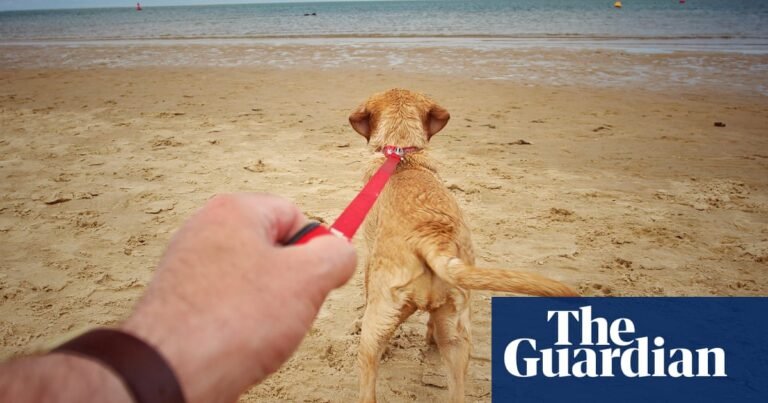Walking your dog may be good for you and your canine companion, but research shows it can also be dangerous.
While the health benefits are numerous – encouraging increased activity levels and physical exercise, improving cardiovascular health and weight – researchers found that being pulled on the lead increases the risk of falls and injuries.
The research published in BMJ Injury Prevention estimates that there are so many hand and wrist injuries among the walkers of the UK’s 13 million pet dogs that it could be costing the NHS in excess of £23m a year.
Hand and wrist injuries account for up to 30% of all cases treated in accident and emergency departments and 20% of acute fractures. The British Society for the Surgery of the Hand says hooking fingers under a dog’s collar can cause finger fractures, while wrapping the lead around the wrist, hand or fingers can cause serious injury if the dog pulls suddenly.
Experts from Raigmore hospital in Inverness and Sengkang general hospital in Singapore reviewed five US studies involving almost 500,000 injuries from dog walking.
Of these, more than a fifth were specific fractures or soft tissue injuries to the hand and wrist. Finger and wrist fractures were the most common, accounting for just under 62,000 injuries. And more than two-thirds of injuries were caused by the dog pulling its lead, with the remainder attributed to tripping over the lead or dog and falling, and getting tangled up in the lead.
While dog walking is not any riskier than other activities for injuring hands or wrists, the study found that women and older adults were disproportionately affected by dog walking injuries. Almost three-quarters of the injuries were among women and just under a third among those over the age of 65.
The authors then modelled the potential costs of treating fractures and casts for broken wrist bones and calculated that treating distal radius fractures caused by dog walking-related injury could cost the NHS in England more than £23m a year alone. The figure does not include the wider economic impact of patients being unable to work and potentially higher care needs, the authors added.
“Preventive measures, including safer leash practices and public safety guidance, should be implemented to reduce injury risk,” the authors said.
“Policies should teach dog owners optimal dog walking practices to minimise injuries and enforce adequate dog training to reduce the risk of dogs injuring the person walking them.”
Responding to the findings, Mark Bowditch, the president of the British Orthopaedic Association, said: “Dog ownership is often promoted and encouraged for the multiple health benefits described. Nevertheless this data demonstrates that injuries may occur during the day-to-day activities of living with dogs.
“Hand, wrist and arm or shoulder injuries are very common and increasing. They can cause considerable functional disruption and interference.
Owners needed to be informed and educated about how best to prevent these injuries, he added. “This may be the breed suitability and exercise needs, simple available training, leash design, usage and handling.”
Ryan Trickett, the communications chair of the British Society for Surgery of the Hand, said: “Anecdotally we have known there are some risks to dog walking for many years, and this review enables a better understanding of the burden of this problem.
“Sudden pulls from the lead or the collar can easily cause walkers to fall and fracture their wrist. However, other injuries are also common in this scenario. Twisting injuries to the finger can be particularly damaging as they cause tears in the skin and often underlying finger fractures. These injuries can be troublesome to treat and the finger rarely returns to complete normality.”
A spokesperson for the Kennel Club said: “All owners should recognise how important it is to train their dog to walk on a lead without pulling or straining, to avoid injury for both dogs and people, and as part of making sure their four-legged friend is a good canine citizen.”
This would help ensure owners could remain in control of their dog while walking among people, other dogs and distractions, and without pulling.
He added: “Choosing the right collar, lead and equipment from the offset is also important – they need to be comfortable, well-fitted and secure.”
